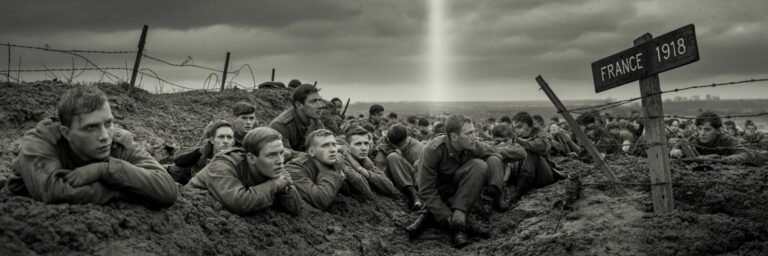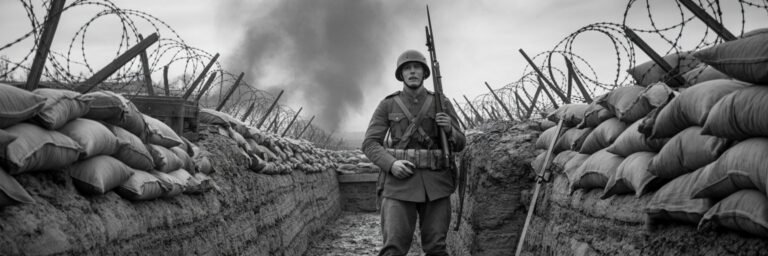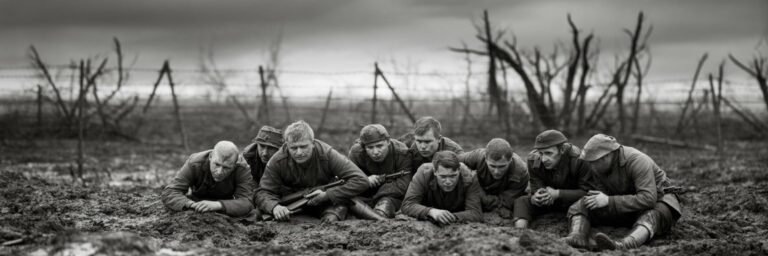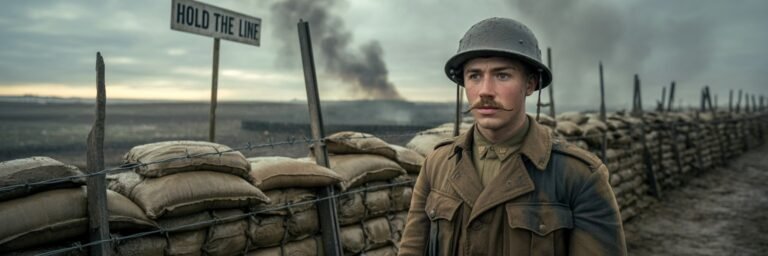INTRODUCTION
The echoes of World War I, a global conflict that raged from 1914 to 1918, reverberate still in the tapestry of world culture. It was a war that tore societies apart, rearranged political landscapes, and irrevocably changed how we, as a planet, perceived ourselves and our place in history. This article delves into the haunting cultural legacy of the “Great War,” an event that left indelible imprints on literature, art, film, music, and collective memory.
HISTORICAL BACKGROUND
World War I was a horrific theater of destruction, loss and disenchantment, sparked by the assassination of Archduke Franz Ferdinand of Austria-Hungary. Fueled by national pride, imperialism, militarism, and tangled alliances among the main European powers, the world was plunged into an unprecedented conflict.
Over 70 million soldiers were mobilized, and out of them, about nine million lost their lives and countless others were maimed or mentally scarred. The aftermath of the War saw the dismemberment of empires, the birth of new nations, a redirection of global power, and social upheaval.
THEORIES AND INTERPRETATIONS
Historians view the direct effects of World War I through different lenses. One widely accepted viewpoint is that of the “Lost Generation Theory”. It posits how the War destroyed the youthful innocence of the generation coming of age in that period, leading to disillusionment. This was reflected in the works of writers like Ernest Hemingway and e.e cummings who themselves served as ambulance drivers in the War.
Another theory delves into the psychological impacts of World War I. It is often referred to as the “Birth of Modern Psychology Theory”, as the war compelled humanity, for the first time, to acknowledge psychological trauma as a genuine war wound. The term “Shell Shock” was coined as medical professionals and psychologists struggled to grapple with the mental sufferings of the survivors.
MYSTERIES AND CONTROVERSIES
The scale of World War I churned out several mysteries and controversies. Among them is the legend of the ‘Angel of Mons,’ where British soldiers reported visions of a supernatural entity empowering them. Historians debate whether it was a propagated myth to boost British morale in a critical phase or a collective hallucination influenced by stress and fatigue.
A controversy that ignited heated debate was the execution of Mata Hari, accused as a German spy. Scholars question whether she really was a double agent or simply a scapegoat sacrificed to boost the French morale, pointing out inconsistencies in the evidence presented against her.
SYMBOLISM AND CULTURAL SIGNIFICANCE
World War I is rife with symbolism and cultural significance. The War symbolized the brutal reality of modern industrialized warfare and the fallacy of war as a glorified, heroic endeavor. Poppies, growing on battle-ravaged fields, came to symbolize the bloodshed, embodied in the poem ‘In Flanders Fields’, later leading to the ‘Poppy Appeal’.
In literature, the ‘Lost Generation,’ wrote transformative works, encapsulating the desolation and cynicism birthed by the War. T.S. Eliot’s ‘The Waste Land’ portrays a civilization in moral and cultural decay, while Hemingway’s ‘A Farewell to Arms’ showed war’s brutal toll on individuals.
MODERN INVESTIGATIONS
Modern investigations delve into unresolved issues from World War I. Archaeological studies have been employed to unravel the mysteries shrouded in World War I, such as excavations of the tunnels and trenches, where lower strata reveal hidden truths about life in the trenches.
Investigations into the use of chemical weapons have painted a grim picture of the biological warfare employed and its long-lasting repercussions on health, paving the way for the subsequent conventions banning such weapons.
LEGACY AND CONCLUSION
The cultural legacy of World War I pervades our contemporary world. The political geography we recognize, the modern psychological understanding and treatment, the cultural productions – all bear the imprints and scars of the War.
The impact of the War on art and literature is perhaps the most vivid. From the stark statements of poets like Wilfred Owen and Siegfried Sassoon, to Pablo Picasso’s Guernica – their works serve as stark, lasting reminders of the War’s tragedy, shaping our collective memory and consciousness.
By reshaping humanity’s understanding of war, propelling us into a modern era of psychology, and leaving deep imprints on the arts, World War I stands as a mammoth cultural milestone in world history.
In conclusion, World War I was not just a clash of nations, but a turning point in human history and culture. Its impact seeped into every facet of societal life, dissolving the romanticism of warfare, giving birth to poignant aspects of modern culture and influencing global consciousness. Even as we hold a minute of silence every November 11th, the remembrance day, we are testament to the profound cultural legacy of World War I – a legacy reminding us of the horror that unfolded and the hope that persisted, shaping the world we inhabit today.






